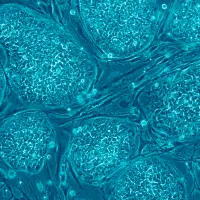The heart’s function is to consistently move the blood in the body for the blood to spread nutrients to other body parts or to be replenished with oxygen and nutrients from other respective organs. The heartbeat is a way to understand the pace at which the blood is moving and how quick the heart is pumping itself.
A heartbeat changes based on its environment. Running and high-intensity movement causes the heart to increase its number of beats whereas resting may lead to a lower heartbeat for the low amount activity that does not require as much oxygen. Depending on the difficulty and intensity of each activity, the heart accommodates via changing its pace to fit the body’s needs. In certain cases, however, a cardiac arrhythmia occurs and can lead to different cardiac issues that may or may not be harmless. Cardiac arrhythmia has affected millions of people in a multitude of forms. This article explains the basics of this condition such as heart block and bradycardia. The article is solely for educational purposes and not to diagnosis.
What is a Cardiac Arrhythmia?
Cardiac arrhythmia is defined as a heartbeat that occurs at a pace that is too quick, slow, and/or irregular. Arrhythmias occur whenever electrical impulses that coordinate the beats of your heart fail to function ordinarily. They can happen in any type of body regardless of age, sex, and health. Although the risk is consistently low for those with a healthier lifestyle, arrhythmias may also worsen in severity depending on the condition of the heart.

What Is Considered A Normal Heart?
A human heart consists of four chambers: an atrium and a ventricle on each side. The left atrium receives oxygen-rich blood from the lungs for the left ventricle to disperse it back into the body. The right atrium receives de-oxygenated blood from the body for the right ventricle to send to the lungs to be oxygenated once more. The rhythm at which the chambers pump is controlled by the sinus node; a pacemaker. Through the sinus node, electrical pulses cause the chambers to contract and send the blood into the ventricles, lungs, or the body. These electrical impulses show as a wave on an electrocardiogram (EKG or ECG). Each spike on the wave is represented by a letter from P to T in order from first to last.
Normal hearts at good health can have 60 to 100 beats per minute. Professional athletes can have healthy heartbeats as low as 40 beats per minute due to their active lifestyle.
Types of Cardiac Arrhythmias
Arrhythmias are classified by its site of origin as well as the rate of the arrhythmia or its speed. For this article, we will focus on three groups: bradycardia, tachycardia, and heart block. For a normal heart, bradycardia is considered a resting heartbeat lower than 60 beats per minute while tachycardia is a heartbeat higher than 100 beats per minute at rest. Heart block deals with the electrical impulses from the atriums to ventricles slowing down or being interrupted.
Bradycardia
Bradycardia can vary heavily on a case-to-case basis as some athletes have built up a cardiovascular system that has low, yet healthy resting heart rates meanwhile medications for certain conditions may lower heart rates but still continue to pump an appropriate amount of blood.
This type of arrhythmia still shows in different types of conditions such as sick sinus syndrome. Sick sinus syndrome is a syndrome in which the sinus node, the node that controls the electrical impulses to contract the chambers of the heart, starts to function improperly. This can cause a rally between both bradycardia and tachycardia. Scarring near the sinus node can slow down or completely block off the electrical signals and lead to the onset of sick sinus syndrome as well.
Tachycardia Located In The Atrium
There are various types of tachycardia that are located in the atriums such as atrial fibrillation, atrial flutter, and supraventricular tachycardia.
Atrial fibrillation is a chaotic cluster of electric signals that cause the atria to contract weakly and rapidly in irregular intervals. The fast-paced atria complicate the following ventricle which leads to irregular, fast-paced contractions in an attempt to compensate for the constant activity from the atrium. This type may eventually solve itself, however, there are cases in which it will not stop until further treatment is applied.
Atrial flutter and fibrillation share common traits such as constant yet weak contractions in the atrium. The flutter differs by consistency rather than the fibrillation’s sporadic contractions. This is not to say it is any less dangerous as atrial flutter are linked to further heart complications such as stroke.
Supraventricular tachycardia is an umbrella term for several different types of arrhythmias that in the atriums or atrioventricular nodes. They are distinct with brief episodes of palpitations.

Tachycardia Located In The Ventricles
Tachycardia in ventricles can be in several different conditions. Ventricular fibrillation, Long QT syndrome, and ventricular tachycardia are a few examples. Ventricular fibrillation is similar to atrial fibrillation such that the ventricle contracts quick at consistent rates. However, atrial fibrillations are not as fatal due to the ventricle receiving the blood while the ventricle quivers without pumping adequate amounts of blood into the body. This slows down the movement of the blood in the body as well as the heart rather than solely the heart. The problem needs immediate medical attention within minutes of its onset.
Ventricular tachycardia is due to irregular electrical impulses at the ventricles. Without being filled to a proper amount, contractions of an insufficient amount of blood into the body occur. This is not a serious problem for those with a healthy heart but may be harmful to those with heart disease or irregularities.

Heart Block
There are three types of heart block: first, second, and third. They are distinctive by the degree of the delay from the atrium to the ventricle.
First Degree Heart Block
Also known as the first-degree atrioventricular heart block, this is the least dangerous form of heart block of the three. Despite having been delayed, first-degree heart block still allows for electrical signals from the atriums to reach the ventricles. It does not have a great effect on the rest of the body due to its mild severity and thus is often without symptoms. First-degree occurs when the first wave of a heartbeat on an EKG, the P wave, occurs more than 200 milliseconds prior to the rest of the heartbeat.
Second Degree Heart Block
Second-degree atrioventricular heart block either prolongs the electrical impulses or blocks them completely from occurring. On an EKG, all waves after P disappear and all other chambers fail to contract. This type of heart block can also be seen in asymptomatic cases but may also include other symptoms like syncope. Second-degree may lead to further complications that raise the risk of mortality.
Third Degree Heart Block
The most harmful of the three is third-degree atrioventricular/heart block or complete heart block. This type of atrioventricular heart block causes no electrical signals to pass and leave the chambers to complete dissociation; the activity of the chamber independent and inconsiderate of all other chambers. Complete heart block results in a slow, irregular heartbeat.
Symptoms of Cardiac Arrhythmias And Further Complications
Different arrhythmias lead to different symptoms. In fact, some arrhythmias, like first-degree heart block, do not have any symptoms at all. However, the most visible symptoms in a general arrhythmia include chest pains, shortness of breath, either racing or slow heartbeats (tachycardia and bradycardia). Arrhythmias may also cause fatigue, dizziness, anxiety, and fainting or a feeling of fainting.
Cardiac arrhythmia can increase risks for other certain conditions such as stroke. Strokes are caused by clotting in the brain that cuts off oxygen. Arrhythmias are commonly associated with blood clot formation and thus increases the chance of a stroke. This, however, can be resolved with medication. Blood thinners and other types of medication help decrease the chance of any clotting that may cause damage in the form of a stroke or another clot-related condition. If bradycardia or tachycardia is left untreated and the heart cannot function properly for a certain period of time, heart failure may occur as well.
Prevention of Cardiac Arrythmias
In order to reduce the risk of heart complications such as heart disease and arrhythmia, it is imperative to retain a healthy and active lifestyle. It can include maintaining an exercise routine, lowering stress, avoiding any first- or second-hand smoking, and eating a healthy diet.

Click and check out these articles for more information: 🙂
Circulatory System: Blood Flow Pathway Through the Heart
Circulatory System: Heart Structures and Functions
Ductus Arteriosus Vs Ductus Venosus Vs Foramen Ovale: Fetal Heart Circulation
Cardiology 101- Atrial Fibrillation
Works Cited
Agrawal, Akanksha. “Third-Degree Atrioventricular Block (Complete Heart Block).”
Theheart.org, 5 July 2018, emedicine.medscape.com/article/162007-overview. Accessed 30 May 2020.
Alaeddini, Jamshid. “First-Degree Atrioventricular Block.” Theheart.org, 6 Jan 2020,
emedicine.medscape.com/article/161829-overview. Accessed 30 May 2020.
“Heart Block.” Heart and Stroke Foundation of Canada, Heart & Stroke, 2020,
www.heartandstroke.ca/heart/conditions/heart-block. Accessed 30 May 2020.
Chaudhry R, Miao JH, Rehman A. Physiology, Cardiovascular. 2020 Nov 20. In: StatPearls [Internet]. Treasure Island (FL): StatPearls Publishing; 2020 Jan–. PMID: 29630249.
Mayo Clinic. “Heart Arrhythmia.” Mayo Clinic, Mayo Foundation for Medical Education and
Research, 19 Nov. 2019, www.mayoclinic.org/diseases-conditions/heart-arrhythmia/symptoms-causes/syc-20350668. Accessed 30 May 2020.
Newman, Tim. “The Heart: Anatomy, Physiology, and Function.” Medical News Today,
MediLexicon International, 9 Jan. 2019, www.medicalnewstoday.com/articles/320565#the-valves. Accessed 30 May 2020.
Miao JH, Makaryus AN. Anatomy, Thorax, Heart Veins. 2020 Jul 31. In: StatPearls [Internet]. Treasure Island (FL): StatPearls Publishing; 2020 Jan–. PMID: 31747193.
Sovari, Ali A. “Second-Degree Atrioventricular Block.” Theheart.org, 26 Jan. 2017,
emedicine.medscape.com/article/161919-overview.
“Who Is at Risk for an Arrhythmia.” National Heart Lung and Blood Institute, U.S. Department of Health and Human Services, 1 July 2011, www.nhlbi.nih.gov/health-topics/arrhythmia#risk-factors. Accessed 30 May 2020.
Copyright © 2022 Moosmosis Organization: All Rights Reserved
All rights reserved. This essay first published on moosmosis.org or any portion thereof may not be reproduced or used in any manner whatsoever
without the express written permission of the publisher at moosmosis.org.

Please Like and Subscribe to our Email List at moosmosis.org, Facebook, Twitter, Youtube to support our open-access youth education initiatives! 🙂














84 replies »